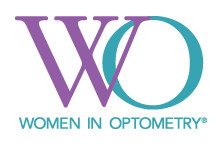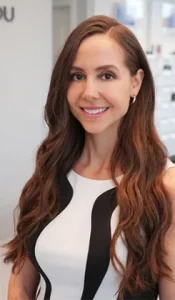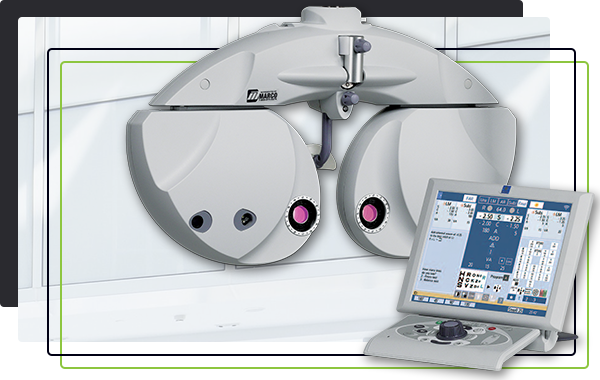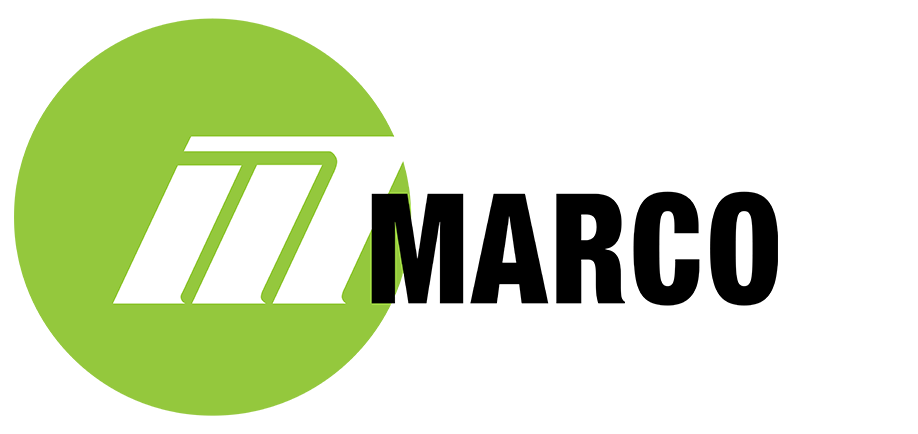
Original Article Published in Women in Optometry
–
 Kathleen Joyce, OD, of EYECARE for You, makes a firm distinction between the different automated refraction systems out there. “My refractions are doctor-driven, but I love having the technology that helps me get to an accurate subjective refraction more quickly,” she says. That is important to her in her two practice locations where she focuses on medical services and custom fit contact lenses. “The refraction is a pivotal part of the exam, and my Marco TRS automated refraction system improves my overall efficiency,” she says.
Kathleen Joyce, OD, of EYECARE for You, makes a firm distinction between the different automated refraction systems out there. “My refractions are doctor-driven, but I love having the technology that helps me get to an accurate subjective refraction more quickly,” she says. That is important to her in her two practice locations where she focuses on medical services and custom fit contact lenses. “The refraction is a pivotal part of the exam, and my Marco TRS automated refraction system improves my overall efficiency,” she says.
In 2018, Dr. Joyce started her practice cold in Richboro, Pennsylvania, a northern suburb of Philadelphia. She had used the TRS system in a practice where she had been an associate, so getting her two exam lanes equipped with Marco technology in her new office was a priority.
Then she acquired a practice in Newtown from a retiring physician, who continues to work part-time. That location had a different brand of refraction system, “but I like the function of the Marco TRS system. I did look at a few others, but when it comes to the ease of use and integration with other technology, I liked this the best,” she says. She says that it’s also wonderful how supportive the selling optometrist was about making the switch to her preferred technology. She converted both of those lanes to the Marco TRS technology.
EFFICIENT PROCESS

“I saw the return on my investment,” she says. “The initial results are incredibly accurate. When I cross check my results with retinoscopy, my subjective refraction is very similar to the autorefraction. Allowing the patient to see side by side images results in greater patient confidence during the subjective refraction,” she says.
The system plays an important role whether it’s a routine comprehensive eye exam or a more medically-driven one. “By saving time during the refraction, I have more time to spend addressing a patient’s chief complaint in greater detail. This allows my examinations to be more patient- and problem-focused. It also affords me the opportunity to explain the need for follow up care beyond the comprehensive eye exam, ultimately resulting in greater patient satisfaction,” she says.
During more routine eye exams, Dr. Joyce estimates she can shave five minutes off the time the patient is in the exam room. “If I have several routine patients scheduled that day, it means I can see an extra one or two patients a day. If the average revenue is $300 a patient, one extra patient per day can be a $75,000 increase to my annual gross revenue,” she says.
MORE EXAM PATIENTS=MORE OPTICAL CUSTOMERS
It also means that these patients can spend those extra few minutes in the optical, where the message about second pairs of eyewear or backup eyeglasses is reinforced by the optical staff. In contrast, patients who feel like they’ve been challenged in the refraction or whose exam took longer than they expected are often the ones who want to rush out and delay buying their eyewear – or skipping the step altogether.
Plus, those extra one or two patients a day who can be seen each day also mean one or two additional customers passing through the optical. “The industry average for capture rate is around 50%. If I can bring two more patients in a day, that can translate to at least one more patient a day buying eyewear.”
SOLID STARTING POINT
In more complex cases, she appreciates having the data from the Marco pretest autorefractor because it gives her a solid starting point. “I can make decisions about the data I’m getting from the autorefractor, and if results subjectively don’t make sense, I know I have to take another approach,” she says. She looks for the red flags that might indicate something is unusual – such as a dramatic prescription change—as she’s doing her own testing.
An automated refraction process never takes the place of her experience and knowledge. “But it can free up time that I can use on patient history or education, as well as discussing follow-up care,” she says.
With the two offices just a 15-minute drive apart, Dr. Joyce spends some time in each one every day, although she is full-time in the Richboro office. She also has an associate who covers there, and the retiring doctor continues to see his patients in the Newtown office. All three doctors see the technology as an enhancement to their exams as well as a positive return on investment.

